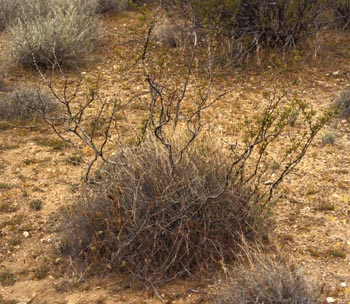Bush Muhly

Common Name(s):
Bush Muhly
Hoegrass
Scientific Name:
Muhlenbergia porteri Scribn. Ex Beal
Symbol:
MUPO2
Description:
Life Span: Perennial
Origin: Native
Season: Warm
Growth Characteristics: Bush muhly is a bunchgrass reaching a height of up to 3 feet (1 m) high and 1 ½ to 3 feet in diameter. It has no rhizomes, but the base is decumbent. It is often highly branched. Bush muhly regenerates by seed. It begins growth from late winter to early spring and flowers from early spring to early summer. Fruits mature in late summer/early fall. Given sufficient moisture, bush muhly does not die back to the root crown in winter, and new growth starts from near the base of the previous year's stems.
Seedhead: An open, spreading panicle, two to four inches long, with fine, much-branched branches. The spikelets are borne at the tip of the panicle branches and contain one small floret. The lemmas have an awn 1/8 to 3/8 inch long.
Leaves: Smooth with flat and narrow blades. The are pointed, and up to two inches long. The leaves are rolled in the bud, ligules are 1/16 inch long, membranous, incised on margin. No auricles.
Stems: The stems are much branched, bent at the nodes, spreading, tangled and coarse, with prominent nodes.
Ecological Adaptions:
Bush muhly is a drought-resistant grass which occurs on rolling hills, alluvial fans, benches, mesas and steep slopes at elevations between 3500 and 5500 feet. In the Great Basin, It occurs mainly along drainages. Generally, bush muhly grows in extreme Southern parts of the state on low elevation semidesert grassland ranges in good condition, as well as in deserts. Throughout much of its range bush muhly is often found growing under the protection of shrubs, such as mesquite and creosotebush, more than in open areas.
Bush muhly seedlings, shoots, and roots are all adversely affected by a high temperature regime.
Soils: Found mostly on soils that are shallow or moderately deep but high in lime content.
Associated Species: Bush muhly is commonly found in association with velvet mesquite, creosotebush and Joshua tree. Common grass associates of bush muhly include bristlegrass, plains bristlegrass, plains lovegrass, cane beardgrass, green sprangletop, Arizona cottontop, and Lehmann lovegrass.
Uses and Management:
Bush muhly is readily eaten by livestock throughout the year when available; however, it is usually not abundant enough to provide much forage. It is grazed heavily in winter when other species become scarce. Because of its branching habit, it is extremely susceptible to heavy grazing. Bush muhly is damaged when continuously grazed to a stubble height of less than 4 inches (10 cm).
Bush muhly ranges from average to highly palatability for all classes of livestock, depending on season and precipitation. With sufficient moisture, bush muhly may remain green throughout the year and is especially palatable in the winter and prior to summer rains when other grasses are dry.
In areas where creosotebush is less than 3 feet (1 m) in stature, bush muhly appears to affect the creosotebush detrimentally and in some instances may be responsible for its death by competing for moisture, nutrients, and sunlight.

